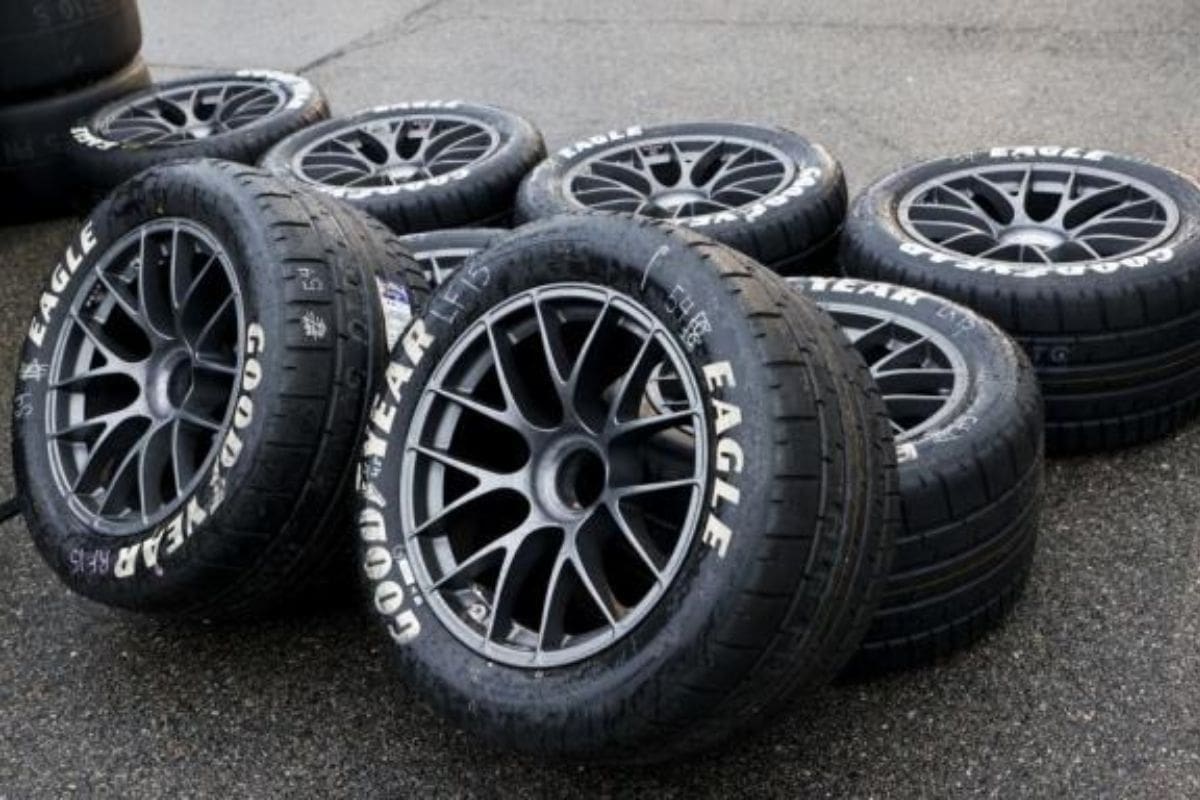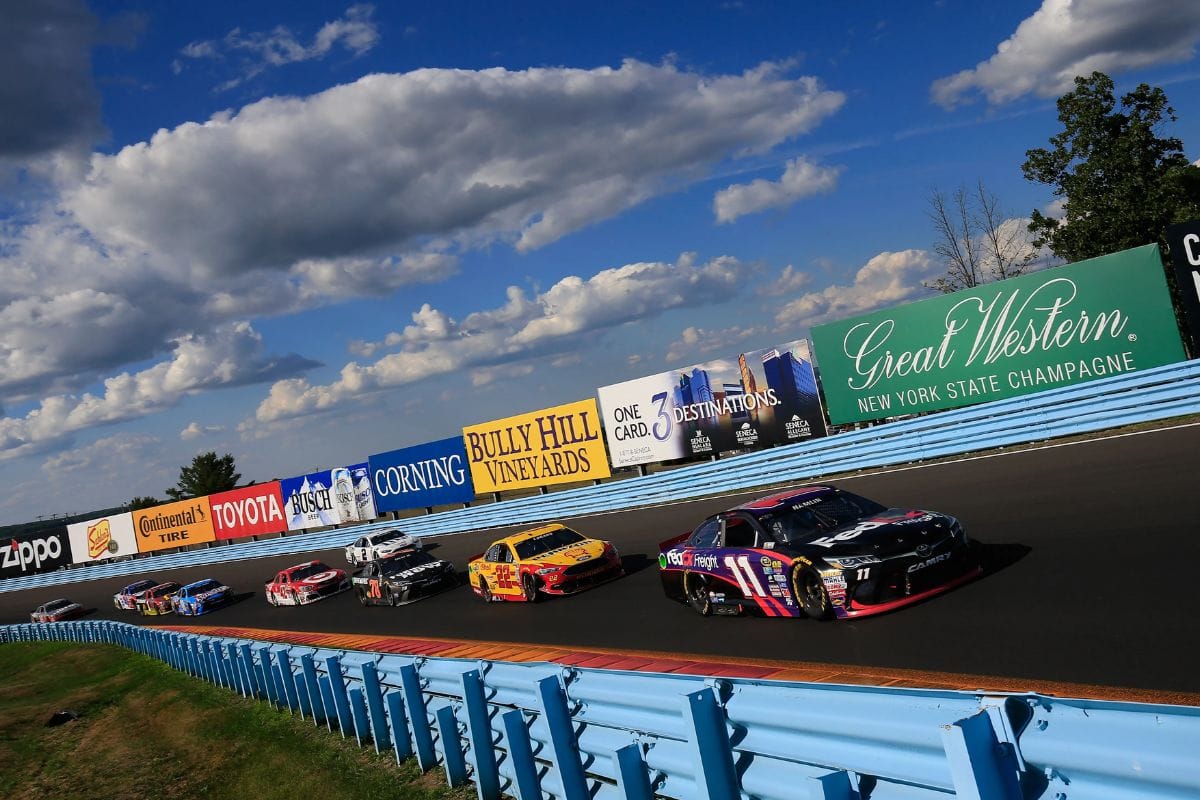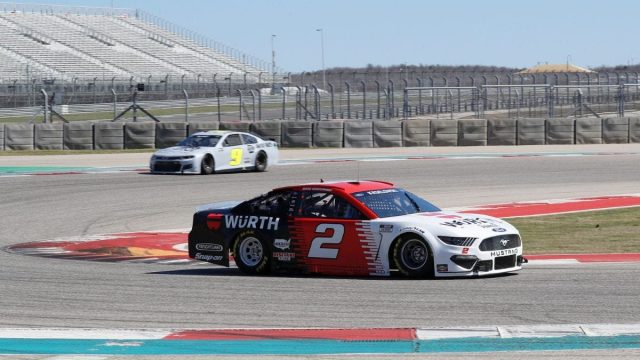Goodyear’s Unique Tire Test at Watkins Glen: The recent tire test crafted by Goodyear at Watkins Glen was anything but routine, resulting in several unexpected driver spins that underscored both the rigorous demands of the track and the cutting-edge tire technology being scrutinized. With notable figures like Tyler Reddick and Daniel Suárez sharing the asphalt with rising stars such as Jesse Love, the session offered a striking tableau of skill, adaptability, and the relentless pursuit of performance. However, the spins served as a stark illustration of the fine line between control and chaos, prompting deeper questions about the future of tire innovation in motorsport. What insights did these spins reveal about the next generation of racing tires?
Key Highlights
- Goodyear’s tire test at Watkins Glen concluded with multiple driver spins, emphasizing the session’s rigor.
- Diverse drivers provided mixed feedback on tire grip and durability.
- Extended test sessions simulated real race conditions to optimize tire performance.
- The test included seasoned pros and rising stars to refine tire strategies.
- Stress-testing highlighted the balance between aggressive driving and tire management.
NASCAR Cup Series Stars Test Goodyear Tires at Watkins Glen
How do top-tier NASCAR drivers like Tyler Reddick, Daniel Suárez, and Austin Cindric adapt to the evolving demands of road-course racing while participating in Goodyear’s critical two-day tire test at Watkins Glen International? The answer lies in a blend of their driving acumen, the intricate feedback loop with engineers, and the evolving technological landscape of NASCAR.
Reddick, Suárez, and Cindric, each known for their prowess on road courses, approached the test with surgical precision. Their adaptability was on full display as they navigated the nuances of Watkins Glen’s challenging layout, a circuit renowned for its mix of high-speed straights and technical corners. These sessions were not merely about driving; they were about extracting nuanced data to fine-tune tire performance for the upcoming playoff race, a pivotal moment in the NASCAR season.

The test sessions at Watkins Glen were meticulously designed to simulate race conditions, pushing the new tire combinations to their limits. Reddick’s aggressive yet controlled driving style provided valuable insights into tire wear and degradation, while Suárez’s smooth and consistent laps highlighted the tires’ behavior under sustained pressure. Cindric, with his methodical approach, contributed critical data on tire grip and stability.
“I do think [Thursday] is going to be more productive with the longer runs,” Suárez said. “There is only so much you can learn with six to eight laps. This was good. It’s always fun to come back here to Watkins Glen. The bus stop is quite different, so we’re learning on that. We were able to make a couple of adjustments in the bus stop, maybe in Turn 1. I think we’re making progress.”
Engaging in real-time dialogue with Goodyear engineers, these drivers offered immediate, actionable feedback. This iterative process was essential for refining tire compounds and constructions, ensuring peak performance when the stakes are highest. Such collaborations underscore the symbiotic relationship between driver skill and technological innovation in modern NASCAR.
Through this tire test, Reddick, Suárez, and Cindric exemplified the relentless pursuit of excellence, adapting to new challenges with a blend of experience, precision, and strategic insight, ultimately setting the stage for a high-stakes playoff at Watkins Glen.
Challenges and Changes on the Track
Amidst the evolving landscape of NASCAR racing, the recent modifications at Watkins Glen International, particularly the removal of curbing at the entrance to the inner loop, have introduced both new challenges and opportunities for drivers and teams. This significant alteration was designed to mitigate the physical strain on drivers, a concern that has long been echoed in the paddock. The change was welcomed by drivers, including Austin Cindric, who noted a marked improvement in comfort while maneuvering the course during the test session.
“I had a least favorite; I didn’t have a favorite,” Cindric said of the tires during the test. “I came in after four laps when I was supposed to do eight.”
The absence of curbing fundamentally alters the approach drivers must take when entering the inner loop, demanding a recalibration of their racing lines and braking points. This modification, while seemingly minor, has profound implications for vehicle handling and race strategy as a whole. Drivers now face the challenge of mastering a smoother yet more unpredictable entry, which can change the dynamics of overtaking maneuvers and defensive driving tactics.
From a team perspective, the curbing removal necessitates adjustments in car setup, particularly in suspension and tire management. Engineers must now consider the altered forces exerted on the car, which can influence tire wear and fuel consumption. The test session offered invaluable data, allowing teams to fine-tune their setups to adapt to these changes.
Moreover, the modification at Watkins Glen underscores the ongoing evolution of NASCAR tracks to improve both driver safety and performance. It exemplifies a commitment to innovation and improvement, reflecting a broader trend within the sport to balance the thrill of racing with the well-being of its participants. As drivers and teams continue to adapt, these changes promise to redefine racing dynamics and strategies at this historic circuit.

Driver Feedback and Track Conditions
Building on the adjustments required by the track modifications, the test session at Watkins Glen provided a platform for drivers to offer nuanced feedback on the performance of Goodyear’s tire compounds under the new conditions. The session, marked by varied driver experiences, highlighted the complex interaction between tire technology and the reconfigured track layout.
Austin Cindric, an emerging voice in the field, conveyed mixed feelings about the tire compounds. Cindric’s feedback underscored the intricate balance needed to optimize tire grip and durability on the reprofiled track surface. His insights were invaluable, pointing to areas where the tire compounds excelled and where further adjustments could improve performance. This balanced critique is vital for Goodyear’s iterative development process.
“It’s definitely a lot better in the car,” Cindric said of the entry to the inner loop. “There was quite a big ramp, quite high speed. The cars can still take it, but the fleshy body of water inside the car struggles with that. I don’t think it’s going to affect the racing a whole lot, but it’s way better inside the car.”
Conversely, Tyler Reddick faced a series of spins, a reflection of the demanding nature of the new conditions. Reddick’s challenges illuminated the fine line between aggressive driving and tire management, especially in a test environment designed to push the limits. His experience provided a stark contrast to Cindric’s, emphasizing the diverse range of feedback that Goodyear must synthesize to refine their tire offerings.
“I had a fun day,” Reddick said with a conspicuous laugh. “I somehow kept my car in one piece, but I spun out a lot and tried to hit a lot of things. Today was a handful for us.”
Despite these issues, an air of cautious optimism pervaded the paddock. Drivers anticipated that the extended Thursday session, featuring longer 20-lap runs, would yield more detailed data. These runs are vital for simulating race conditions and providing Goodyear with the performance metrics necessary to make informed adjustments. This phase of testing is instrumental in understanding tire wear patterns, heat cycles, and overall durability, all of which are pivotal for the tires’ success under competitive conditions.
“Track time is important, which is what I think made today frustrating for us.”
“We’ve had a number of issues that have kept us off track, and when we’ve been on track, we’ve spun and not gotten full tire runs in.
“I’m hoping tomorrow that I can learn more, our team can learn more, but the main part of this entire test is to try and help Goodyear figure out what the path is to put a tire together that isn’t going to be soft or go too drastic one way or another on balance but have more fall off.” – Reddick
Importance of Testing for Playoff Preparation
The thorough testing at Watkins Glen serves as a crucial component for playoff-bound drivers, providing them with a strategic edge by allowing in-depth reconnaissance of track conditions well in advance of the September race. For drivers like Austin Cindric, the value of this additional track time cannot be overstated. It offers an unparalleled opportunity to fine-tune their approach and understand the nuances of the circuit, which could be the deciding factor in the environment of the playoffs.
Historically, test sessions have proven to be game-changers. Drivers who have participated in pre-race tests often find themselves better prepared, having meticulously adjusted their strategies based on firsthand data rather than simulations or past experiences alone. This hands-on experience is particularly crucial at a complex and demanding track like Watkins Glen, known for its challenging turns and elevation changes.
The insights gained from the test extend beyond the drivers to their teams, who use the data to optimize car setups, tire choices, and pit strategies. Every lap completed during the test session translates into actionable intelligence, allowing teams to refine their plans and mitigate risks. For instance, understanding how the tires perform under different conditions can influence decisions that may prevent costly mistakes during the actual race.
Moreover, the mental advantage of testing cannot be ignored. Drivers enter the playoff race with heightened confidence, having already navigated the track’s intricacies. This mental edge, combined with technical preparedness, sets the stage for a more controlled and assertive performance. In an arena where every fraction of a second counts, such detailed preparation can be the difference between victory and defeat.
Expanded Participation and Future Prospects
Furthermore, the strategic benefits for Cup Series drivers, the expanded participation of Xfinity Series competitors like Jesse Love, Ryan Sieg, and John Hunter Nemechek shows the broader impact of Goodyear’s testing at Watkins Glen on NASCAR’s developmental pipeline. This inclusion not only allows emerging drivers to hone their skills but also guarantees a thorough evaluation of tire performance across different driving styles and vehicle setups.
Jesse Love’s involvement, although curtailed by an untimely wreck, exemplifies the unpredictable nature of testing and its role in stress-testing both equipment and talent. Despite the shortened session, the insights garnered from even limited laps can greatly influence tire selection and race strategy, benefiting both drivers and teams. This scenario underscores the importance of resilience and adaptability in motorsport, where every lap offers critical data.
Ryan Sieg and John Hunter Nemechek’s participation further highlights Goodyear’s commitment to integrating feedback from a diverse driver pool. Nemechek, piloting a Sam Hunt Racing entry, brought valuable perspectives from his varied racing experience, enhancing the test’s robustness. Sieg’s steady performance provided a contrast to Love’s aggressive approach, showcasing the spectrum of driving techniques that Goodyear’s tires must accommodate.

News in Brief : Goodyear’s Unique Tire Test at Watkins Glen
The Goodyear tire test at Watkins Glen underscored the complexities inherent in motorsport, with driver spins highlighting the challenges of pushing tire performance boundaries. The participation of both seasoned professionals and emerging talents emphasized the necessary adaptability and resilience.
This test showed the unpredictable nature of tire behavior, reinforcing the need for thorough understanding to optimize strategies. Future testing will be vital in refining tire performance and enhancing competitive edge ahead of critical playoff stages.
ALSO READ: NASCAR’s Wet Tire Drama: Delays and Explosive Reactions
